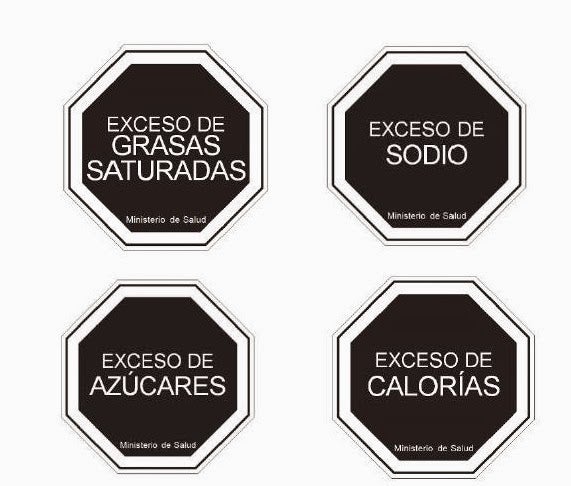Today, worldwide rates of nutrition-related NCDs such as diabetes and obesity in children are alarming. This situation has been particularly critical in Latin American and Caribbean countries in the last couple of years. Because of this, the implementation of different programs to monitor and prevent unhealthy weight gain in children and adolescents is urgently needed.
Policymakers and researchers internationally are increasingly emphasizing how marketing is contributing to unhealthy diets, mainly among children. The wide range of marketing techniques such as television advertising, in-school marketing, sponsorship, product placement, internet and text promotions creates and reinforces the demand for HFSS foods (High Fat, Salt and Sugar).
Various national and international initiatives have recommended that limits should be placed on the types of foods promoted to children. Just last June, UNICEF asked governments and civil society in Latin America to work together to improve advertising practices. They issued this call after a study in 2013 revealed that “Marketing and advertising of unhealthy food and beverages directed to children is attributed to the high incidence of childhood obesity that leads to the development of non-communicable diseases during adulthood.”This study is only one of many that have examined how young children respond to the appeals of brands and their packaging. Research has shown that the use of cartoons, branding elements (e.g. a logo) and attractive designs in the packaging influence children’s taste perception and buying preferences. These findings suggest that because of the growing means of communication, children are now being targeted more than ever. For example, social media networks are now used as an important tool for marketing and advertisement, with Facebook being the most used. The study shows that from the companies assessed, interactive games were available in 46% of their websites and 24% of their Facebook pages.
Because of this, UNICEF recommends the creation of comprehensive public policies that can protect children and adolescents from direct and indirect promotion and advertisement of unhealthy food and beverages.
Government regulation has been proposed as one of the most important high-impact strategies to address this problem. Up to October 2014, only 31% of Latin America and the Caribbean countries had policies in place aiming to regulate marketing and advertisement of food and beverages to children. Of the 22 policies in place, 15 are focused on limiting the presence of certain food and beverage products in schools, 5 are defining clearly the concept of “child”, and only 2 restrict the use of characters, gifts or endorsements by famous people.
While it appears the region may still be in diapers when it comes to restrictions on marketing, there are countries that have implemented regulation that should serve as an example. One such measure was a law adopted in Chile in 2012. The “Nutritional composition of nutrients and their advertising” law and it’s implementing regulation approved in April of this year, requires label warning statements on foods high in fat, sugar and salt, and includes innovative measures to protect children. The products subject to the regulation are those that contain saturated fats, sugars, protein, carbohydrates, calories and sodium with a nutritional composition higher than what is established in specific tables that the law indicates. If a product goes above the values established in the tables it automatically has some restrictions, including the following:
- Restricts the publicity and the use of certain items that attract the attention of children under 14 years. For instance, children’s characters and figures, animations, cartoons, toys, children’s music, people or animals are prohibited.

- The products shall not be sold, promoted or advertised within establishments of preschool, primary or high school education.
- The way to highlight the nutritional properties will be by stamping the descriptor “EXCESS OF” followed by: “SATURATED FAT”, “SODIUM”, “SUGAR” or “CALORIES” in one or more separate octagonal symbols:
(The symbol will be an octagonal figure, of black color at the back and white border and the letters of the descriptor must be capital and white, it also must be added, in white letter the phrase “Ministry of Health”- Diagram No1).
- In the case of imported products, it is necessary to incorporate nutritional information in Spanish on a sticker maintaining the format established by the regulation.
Other countries in the region, such as Mexico have similar measures. In 2014, television and cinema advertising for high calories food and soft drinks was restricted. These ads are banned between 2.30 pm and 7.30 pm during weekdays and between 7.30 am and 7.30pm on weekends. “What we’re looking for is an incentive for companies to reformulate their products so that they’re healthier”, said Álvaro Pérez, a commissioner at Mexican health protection agency COFEPRIS, who helped establish the advertising parameters.
As far as we are concerned, the region has made significant progress in establishing advertising techniques of unhealthy foods and beverages within communication channels. Every country in the region should follow these examples regarding the creation of policies and programs that regulate and protect children from direct and indirect marketing of high-energy and low-nutrient foods. However, this is only a start. We would like to emphasize that social media networks are an important tool for marketing and advertisement. In recent years, these networks have become one of the contributing factors to the obesity-promoting environment that coexists with children´s every day life and therefore must count with a prompt regulation.




